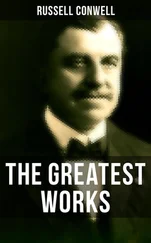“Shoot Bob,” said the President. Gates came right to the point. “We seem to have lost the USS California , a nuclear cruiser, off the coast of South Carolina.” The president peppered him with questions about what steps were being taken. Both men knew that the situation was out of their hands for the time being. “Keep me in the loop, Bob. Whatever I’m doing, tell them to put you through.”
“Yes, sir.”
* * *
The USS Ticonderoga steamed full speed to the last known location of the California . It would be on site within a half hour. Her forward sonar pinging freaked out every whale and dolphin in the Western Atlantic.
Three H-65 Coast Guard rescue helicopters from Coast Guard Station Charleston were speeding toward the coordinates of the last fix. The Coast Guard Cutter Gallatin steamed toward the site as well. The Gallatin had a rescue submersible aboard. By protocol, the local Coast Guard Sector Commander, Captain Eric Buehler, had operational command of the rescue effort, but because this involved a US Navy warship, he would take orders directly from the Chief of Naval Operations.
The lives of 630 American servicemen and women were at stake. Every man and woman on the rescue effort had that thought locked in their minds.
The California has been missing for twelve minutes.
At 0930 on the morning of April 17, Bradley met Chief Ray in the weapons department. As Bradley suggested, Ray told Andrea Rubin that the XO wanted to do a routine check of the department’s weapons so he could prepare a report for the captain. Rubin didn’t think much about it, although normal protocol would have been for Bradley to contact her, the head of the Weapons Department, directly.
“Why don’t you show me the portable rockets, rocket propelled grenades, hand held surface to air missiles, and the other small armaments,” said Bradley.
Bradley noticed that the ordnance was not only stacked neatly but was also wrapped in small bundles for easy moving. “Looks like a couple of guys could move this stuff with ease, Chief.”
The chief got into details. “This entire bulkhead (he pointed to a wall area five feet deep, six feet high and three feet wide) can fit into one Zodiac. That’s why they pack the ammo like this, so that it can be moved ashore easily.”
Bradley lowered his voice. “How often is inventory taken?”
“Once a day Commander,” the chief leaned closer to Bradley, “by yours truly,” he whispered. Bradley’s eyes widened.
“I wonder how long it would take a couple of men to load that wall of ammo into a Zodiac,” Bradley said in a low voice.
“Exactly 17 minutes. Add 10 if it’s a couple of older guys (Ray winked). We train our men in loading Zodiacs as a drill.”
Bradley asked, “Is the other bulkhead, the one on the starboard side, a mirror image of the one to port?”
“Exactly the same, Sir.” He anticipated Bradley’s next question. “Yup, Two Zodiacs, double the bang for the ride.”
“Will that leave any room for carbines?”
“Yes, sir. 50 carbines per Zodiac on top of the other items. But it means only one man per Zodiac if that’s the amount of cargo they’ll carry. But that’s no big deal. A Zodiac is easier to drive than a tricycle.”
The chief warmed to his weapons moving skills. “There’s a way you can increase the capacity of weapons storage by 100 percent.” This was better than Bradley had expected.
“How do you do that?” asked Bradley. The chief pointed to a survival raft capable of holding hold six people.
“Each of those babies can hold the same as a Zodiac without a man on board.” said the chief.
“All together Chief, what do we have?”
Chief Ray took his inventory sheet from his pocket. “Here’s the list sir: 50 M4A1 automatic carbine rifles; 100 rocket propelled grenades, 25 Colt 45s; 20 surface-to-air missiles including shoulder held launchers. We also have a total of 2,000 rounds of ammo for the carbines, and 750 rounds for the 45s.”
“Looks like you could start your own gun company, Chief.”
“Commander, you’re lookin’ at one ass whuppin,’ ammo movin,’ game changin,’ efficient redneck.”
The only thought that plagued Bradley was how they would off load the weapons without being seen.
General Robert E. Lee commanded the Army of Northern Virginia, the largest army in the Confederacy. He wanted to see firsthand the result of the opening hostilities of the war. The entire Confederate military looked upon Lee as the leader. Lee also wanted to talk to General Beauregard about this mysterious Gray Ship that seemed to be the talk of the South.
After he toured Fort Sumter he could see that the result of the battle was a lot of masonry rubble. The walls were pockmarked from cannon fire, but the structure itself was still sound, a valuable new addition to the Confederacy’s defenses.
General Beauregard invited Lee into his quarters in Charleston. He occupied a large office that had once housed an investment company. The space was 30 by 40 feet, equipped with leather furniture and a Persian rug. In the middle hung a crystal chandelier. This man doesn’t look ready for battle, thought Lee.
“First, General, let me congratulate you on your successful siege of Fort Sumter,” Lee said. “I understand that our Navy was also of great assistance in preventing the Yankees from being resupplied.”
“Yes General, I would say that the Navy was crucial to the outcome. If they had been successful in restocking food and ammunition, the Yankees could have held on for a much longer time.” Lee appreciated it when a commander gave credit to forces not under his command.
“I’m concerned, General, about all of the reports I’ve been getting about some strange Gray Ship, ” Lee said.
“I too am concerned about the Gray Ship , Sir. I haven’t seen it myself, but from the descriptions I’ve received, it sounds like it could be 600 feet long, although some reports have it as long as 2,000 feet. Its deck, according to reports, is covered with strange looking weapons. It has incredible speed and maneuvering ability, according to one of our captains who saw the ship up close.”
“And we only know her as The Gray Ship ?” asked Lee.
“I almost forgot to tell you, Sir. She is the USS California . She bears the number ‘36’ prominently on either side of her bow. One of our boats got close enough to read the lettering on her stern.”
“Since we have a name and a number, do we not know anything about her?” asked Lee.
“That’s the most puzzling thing of all, General. I contacted the local office of our Navy Department. They keep a list of all ships of the Union Navy. Neither the name USS California nor the number 36 appears on the list. We have a very effective spy in the Union Navy Department who keeps the list up to date.”
“Has anyone seen any evidence of hostile intent from the California ?” asked Lee.
“No sir, but she flies the Union flag, and we’re at war. Hostile actions from that monstrous ship cannot be a long way off. We can’t identify many of the weapons that have been described, but we can assume they’re armaments because of their projectile shapes.”
“From what you’ve heard, General, do you think one or more of our new ironclad ships could stand a chance against the California ?” Lee asked.
“From what I have heard, Sir, I’m not sure our entire Navy could stand up against her.”
“General,” said Lee, “I recommend posting lookouts at shore batteries along the coast. Have them make drawings of the ship. The ship probably moves too fast for a photograph. Once we have enough we can distribute the information to all of our naval forces.”
Читать дальше












